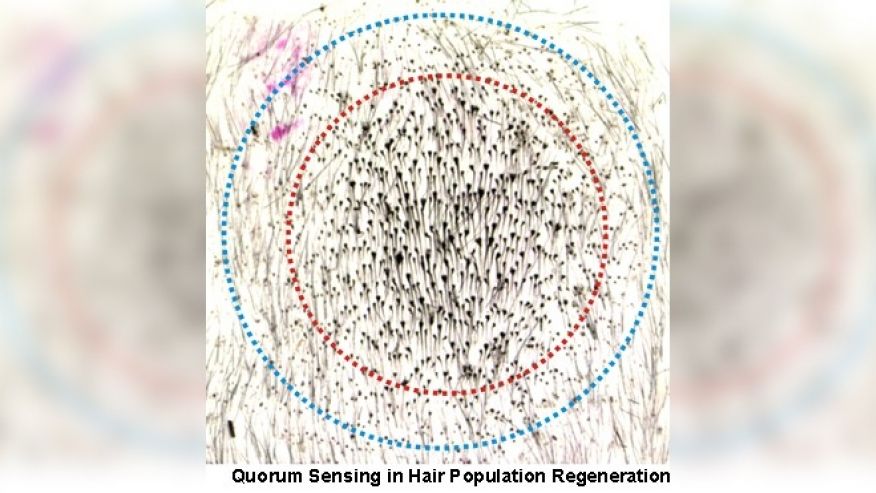 The first step toward figuring out how to take care of your skin and which products to use is properly identifying your skin type.
The first step toward figuring out how to take care of your skin and which products to use is properly identifying your skin type.
It may seem simple, but as Melissa Boyer, an esthetician at Silver Mirror Facial Bar in New York, said, skin types are a little more nuanced than the generalized labels ― oily, dry, normal and combination, for example ― that we see on products.
“We also have to consider other lifestyle factors, like how much you sleep, how much you travel, your diet, your sun exposure, because all of those things affect skin, hormones, oil production and affect stress levels,” Boyer told HuffPost.
Boyer added that the generalized skin types we see on product labels are “a good baseline.” But what do they really mean, and how do you know which ones apply to you?
We spoke to dermatologists, an esthetician and a facialist to get some answers.
Oily Skin
Oily skin is one of the easier skin types to identify.
For Dr. Elena Poulos, a dermatologist in Toronto, a good indicator is the way your face feels soon after it’s been washed.
“People that have very oily skin, even if they don’t use any moisturizer, within an hour or two would feel an obvious oiliness, particularly across their forehead, down the center of their nose, their chin and, oftentimes, that extends down to the chest area,” Poulos said.
Another indicator could be that “your makeup doesn’t stay on as well as you’d like it to, and you use blotting papers regularly,” according to Dr. Hadley King, a dermatologist based in New York.
What should you use?
King suggested using salicylic acid products for oily skin. That can be in your cleanser, face wipes or toner.
Salicylic acid “can penetrate into the pore because it’s oil soluble. That way it can get rid of excess sebum,” King said.
Another ingredient that can benefit oily skin is benzoyl peroxide, Poulos said, but it should be used with caution if you have any other sensitivities on your face.
Dry Skin
Those with dry skin are typically on the other side of the spectrum than those with oilier skin.
Poulos turned again to her face-washing indicator, explaining that those with dry skin tend to feel “very obviously tight” if they don’t moisturize within an hour or two of cleansing.
“The skin around their eyes and mouth would be feeling very tight and uncomfortable without the use of a moisturizer,” she said.
Those with dry skin might also experience flakiness, Boyer said. She made sure to clarify that dryness and dehydration aren’t quite the same thing. Dry skin is a result of a lack of oil in the skin, she said, while dehydrated skin is the result of a lack of water in the skin. (The lack of water tends to be a common side effect of plane travel.)
What should you use?
Boyer suggested using products with sodium hyaluronate or hyaluronic acid (we like The Ordinary’s hyaluronic acid), both of which are humectants that “bind moisture to the skin without adding oil.”
For dry skin, King recommended using detergent-free soap substitutes (like Cetaphil gentle skin cleanser or Glossier Milky Jelly, for example) and opting for moisturizers with ceramides (like CeraVe moisturizing cream) “to help bolster the barrier function of the skin.”
Acne-Prone Skin
Despite the popular belief that acne is largely a teen issue, it can affect people of all ages, Poulos said.
According to Walsh, acne-prone skin “tends to get congested easily due to thicker oil that can get trapped below the follicle and is unable to come to the surface.”
King agreed, saying acne-prone skin is usually marked by regular breakouts and clogged pores, but she also clarified that there’s a “whole spectrum” of acne severity.
“If you only have a rare pimple, then I don’t think you have to consider yourself acne-prone,” she said. “But if you get clogged pores and pimples regularly, then I think that’s fair to say you’re acne-prone.”
What should you use?
As with oily skin, King said salicylic acid can be used to treat acne-prone skin, as it has pore-penetrating abilities and is oil soluble.
Sensitive Skin
According to Boyer, sensitive skin is usually marked by how it reacts to both topical products and factors like the sun’s UV rays.
“Usually if you have a really sensitive skin type, you might be more prone to a skin condition like rosacea or you might be super-sensitive to the sun, in addition to [reacting to] topical products,” she said.
Jenna Walsh, a facialist at Heyday in Los Angeles, expanded on Boyer’s point, noting that with sensitive skin, pores and oil production are “irrelevant.”
“The way that you know if you have sensitive skin is by asking three questions, known as the atopic triad,” she said via email. “They are 1) Do you have hay fever or seasonal allergies? 2) Do you experience eczema? 3) Do you have asthma?”
If the answer to two or all of those questions is yes, Walsh said you’ve likely got a sensitive skin type.
Skin can also become sensitized over time as a result of overusing products that are too harsh, like a rough physical exfoliator, Boyer said. Ingredients like retinoids can also make skin more sensitive, King added.
What should you use?
Treating sensitive skin is more about avoiding certain ingredients, Polous explained. Those who tend to reach for harsher products should steer clear of ingredients like benzoyl peroxide, salicylic acid, glycolic acid and retinoids (unless, of course, you’ve been directed to use these things by a dermatologist), as they can be aggravating or irritating.
Combination Skin
When you see a product labeled for use on combination skin, that term is usually referring to skin that gets a little oily in the T-zone area and dry on other areas of the face. If that sounds like what you experience, there’s a good chance you’ve got combination skin.
However, oiliness and dryness aren’t the only combination of skin types people might experience. For example, Poulos noted that one’s skin can also be acne-prone and sensitive at the same time, or even acne-prone and dry. Everyone’s skin is different, after all.
What should you use?
“Don’t be afraid to spot treat,” Boyer said. “If your skin isn’t acneic [all over], you don’t necessarily need to use an acne wash. Maybe you just focus on a gentle cleanser and using a spot treatment on the areas you get acne.”
If you have dry patches, King suggested sticking to those same ceramide-based moisturizers that would work on dry skin.
Normal Skin
Labeling skin as “normal” has never made sense to us, because having certain skin conditions doesn’t make someone abnormal.
However, in the world of skin care and dermatology, “normal” basically refers to skin that “doesn’t experience any kind of excessive skin conditions,” according to Boyer.
In other words, if you’ve got normal skin, you more than likely won’t get too dry, oily or sensitive to products, and you won’t break out much, King said.
“Normal skin types have a great balance of oil and moisture. This means that your skin probably feels pretty neutral,” Walsh said, noting those with normal skin also tend to have smaller-looking pores than those with oily skin. “You may experience some shine by the end of the day, but only around the center of your face.”
What should you use?
Those with normal skin can usually get away with using most products without experiencing a negative reaction. For those with sensitive skin, King suggested focusing on maintenance, most importantly with sun protection. The rest, she said, is a lot of trial and error. If you like the way your skin behaves while using a certain product or products, there’s no need to change anything, she said.
If you need a little more guidance, just remember you can always go to a dermatologist. They are skin experts, and they can help you figure out the best way to take care of your skin, whether you’re dealing with specific issues, such as acne or eczema, or trying to determine whether certain products are right for you.
[“source=huffingtonpost”]




















